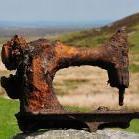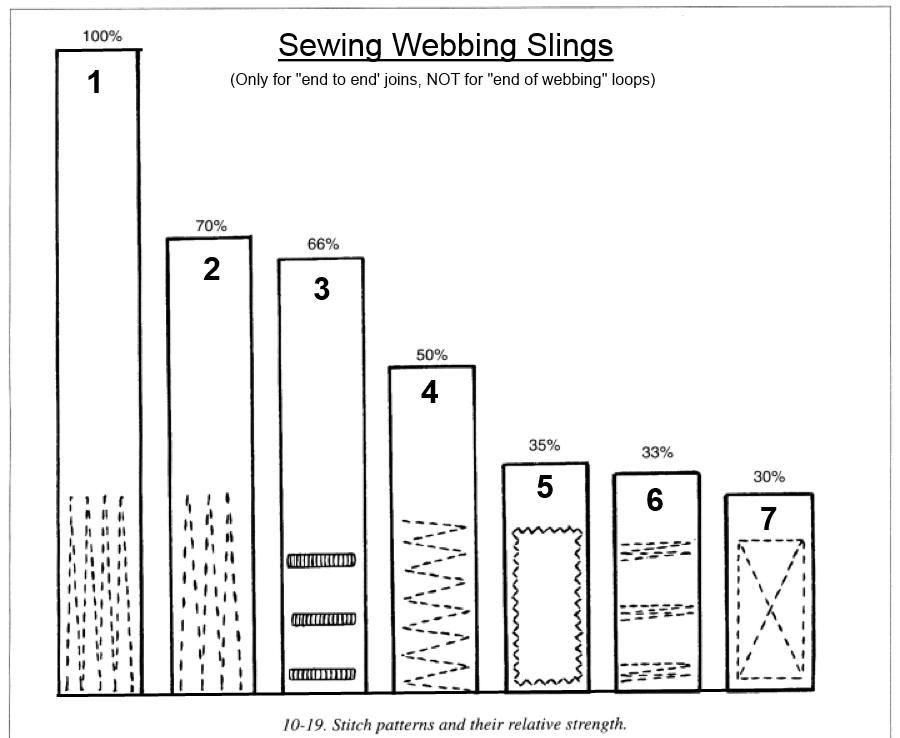-
Posts
193 -
Joined
Profile Information
-
Location
nw florida
LW Info
-
Interested in learning about
sewing machines
-
How did you find leatherworker.net?
google
Recent Profile Visitors
6,142 profile views
trash treasure's Achievements

Member (2/4)
-
Well, since you weren't impressed much by the info (sorry everyone, about the repeat chart image, btw), there's not much more I can say. If you knew all this stuff already, then you should have said so, in your original post. I, for one, wasn't assuming anything, except that you didn't know what thread to use for sewing a tow strap. I guess that mistakenly lead me to to the conclusion that you did not have experience sewing them - Hence my lame attempt at possibly useful info - Obviously, my bad. BTW - I Never read your posts about machine purchase - So many people ask about that, I guess I just glazed over it. Good luck with learning to use it.
-
Since we're on this subject, here's some basic info you might find useful. Some years ago, Sailrite did some testing of various stitch patterns, to try and determine relative breaking strengths : https://www.sailrite.com/How-to-Sew-Webbing-Loops And here's a little chart sewing some of the stitch patterns used for this stuff - I understand that it's now mostly accepted that stitching more or less in line with the pull direction is strongest, with maybe some cross stitching at the ends. In any case, I'm NOT recommending that you sell, or even give away, any straps you make, unless you get them tested and certified. If you make them for your own use, then use a lot of heavy thread, in one of the stronger stitch patterns, and GLUE the lap before sewing (Contact cement, super seam stick, etc) - They won't break at the stitching if you do it right. BUT, if you're not used to this kind of heavy duty sewing, and don't have a machine capable of using heavy thread, you should probably just pass on this type of stuff.
-
I believe nylon is technically stronger than polyester, but has less UV resistance. For something like a lift or tow strap, that won't be left out, probably nylon.
-
As far as the thread goes, that may not be the problem here. I mentioned it, as something to check, when all else fails :~) We've gone through a lot of thread in our shop, and I only remember one spool that was bad that way. It was supposedly bonded polyester, but obviously poor quality, as it fed through the tensions weirdly - Not much to do about this kind of thing, except to try and buy good quality.
-
Looks like it would be a decent, medium capacity, Taiwan made walking foot - Modeled on Singer 111, but updated w. reverse and large bobbin. Interesting - It supposedly has an automatic oiler - I guess maybe the oil cup on the top of the arm gravity feeds the hook. If it's in good shape, it will do just fine for upholstery. If it comes with a clutch motor, and you're not used to that, there's quite a learning curve. Whether the price is good, depends on the condition. At the very least, you'll probably want to put a 45mm pulley on the clutch motor to slow it down, or better yet, change it out for a servo motor. Since you don't have a photo, here's the factory info : http://www.chikon.com.tw/ck-563.htm
-
We had a cone of bad thread once, that would cause that - Uneven thickness, I guess.
-
2 buttons, so probably 111w155 - A good machine, if you don't mind no reverse.
-

Sergers with automatic thread tensioning
trash treasure replied to unionattic's topic in Leather Sewing Machines
No expert here, but if you're talking about a computerized machine, and then if it's truly automatic, it monitors the fabric thickness and stitch pattern, and adjusts accordingly - All done through the miracle of electronics, with sensors telling solenoids what to do. There are some machines like that, that require the user to adjust the tension within a certain range, and then the machine compensates a little - Those would really be semi-automatic. And it's not just sergers - Other kinds of machines can have the feature, also . All this stuff is the reason I buy older machines - I wouldn't begin to know how to service one of these modern marvels, and I can't afford to pay someone else to do it. -
It would seem to me, that it's the interaction of the feed dog with the inner foot, that determines the tracking. So that's where I would look. You might try some different feet, and feed dogs - Aftermarket parts combinations, on a clone machine, might offer all kinds of possibilities ........ Some good, some not-so-good.
-

Number plate on Consew 206RB machine?
trash treasure replied to Texxut's topic in Leather Sewing Machines
It looks like a serial # -

Reverse Pedal on a Post Bed?
trash treasure replied to shoemaker4's topic in Leather Sewing Machines
That would work ! -

Adler 104-VNS2 Presser Foot Height?
trash treasure replied to metallurgynerd's topic in Leather Sewing Machines
I would just lower the feet to the standard on-the-deck position - That would have been the way it came from the factory. But that's just me - YMMV. Nice looking machine, BTW - Much nicer than the ones I usually find :~) -

What's the best sewing machine?
trash treasure replied to ariannacraig's topic in Leather Sewing Machines
Here's one, although I doubt the price would appeal to a "value buyer" - I believe the model has been made by Consew, and re-badged and sold under other names, for some years now, so maybe you could find a used one : https://atlaslevy.3dcartstores.com/Consew-146RB-Zig-Zag-Walking-Foot-Sewing-Machine-Head-Only_p_1128.html -

Grease for Gears in Gearboxes
trash treasure replied to Scoutmom103's topic in Leather Sewing Machines
This is absolutely right - Please do not think to use any kind "gear oil" in a sewing machine gear case - They are NOT sealed like that, and all you will do is make a mess! What works for a bush hog, is NOT what's needed in a sewing machine. Either use some kind light grease, that will stick to the gears, or just take the gear case off, and oil regularly. One grease I've found that works pretty well, if you go the grease route, is "Super Lube" synthetic grease - It's a clear grease, with no smell, and it seems to hang on the gears fine : https://www.amazon.com/Super-Lube-21030-Synthetic-Grease/dp/B000XBH9HI/ref=sr_1_3?crid=102Q4WNC2JWML&keywords=super%2Blube%2Bgrease&qid=1658919014&sprefix=super%2Blube%2Bgrease%2Caps%2C938&sr=8-3&th=1- 28 replies
-
- grease
- industrial sewing machine
-
(and 1 more)
Tagged with:




